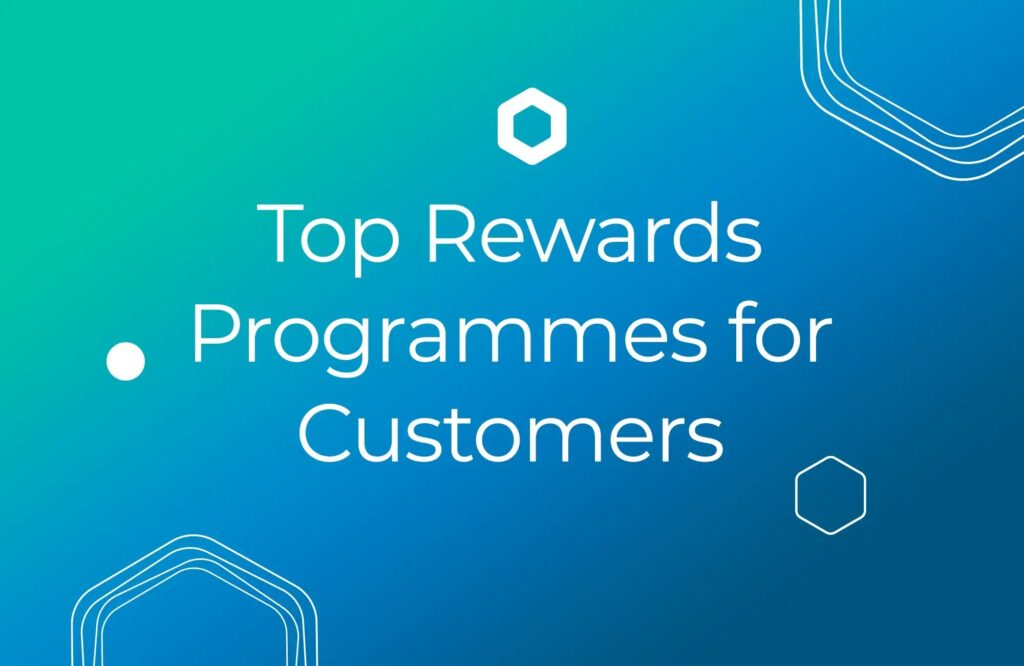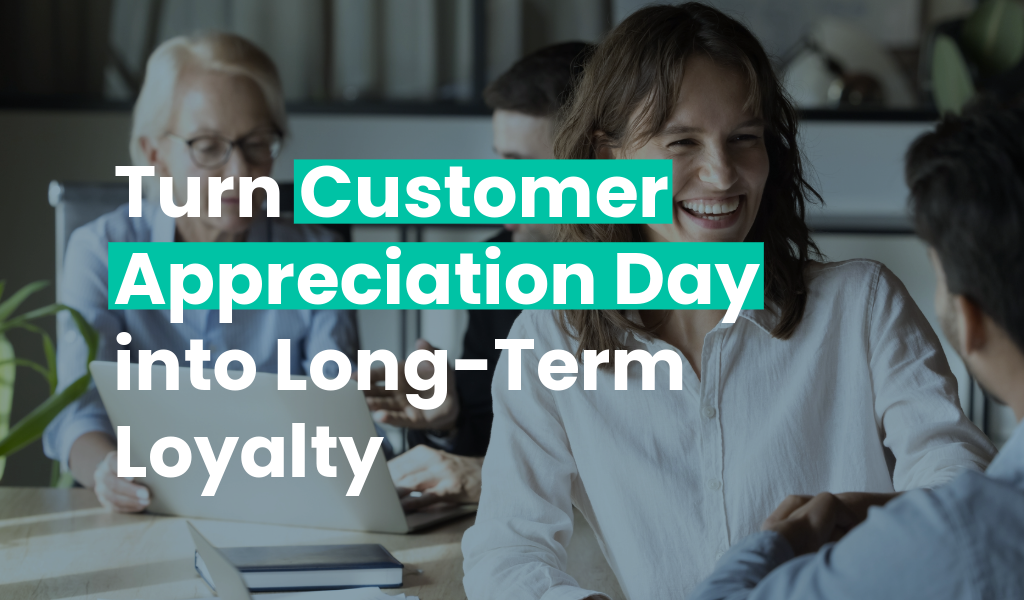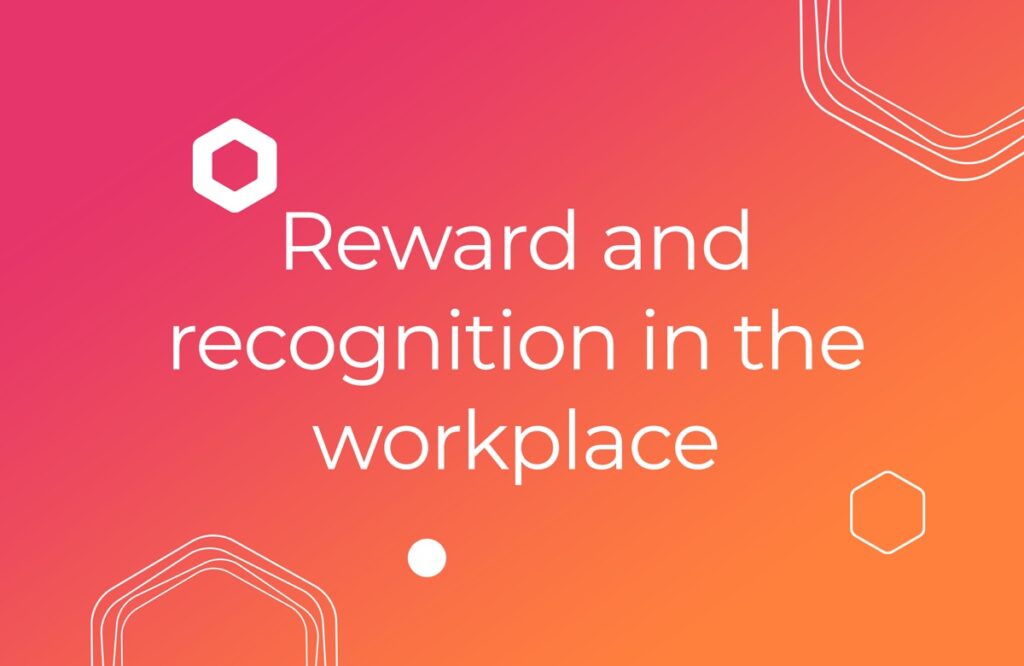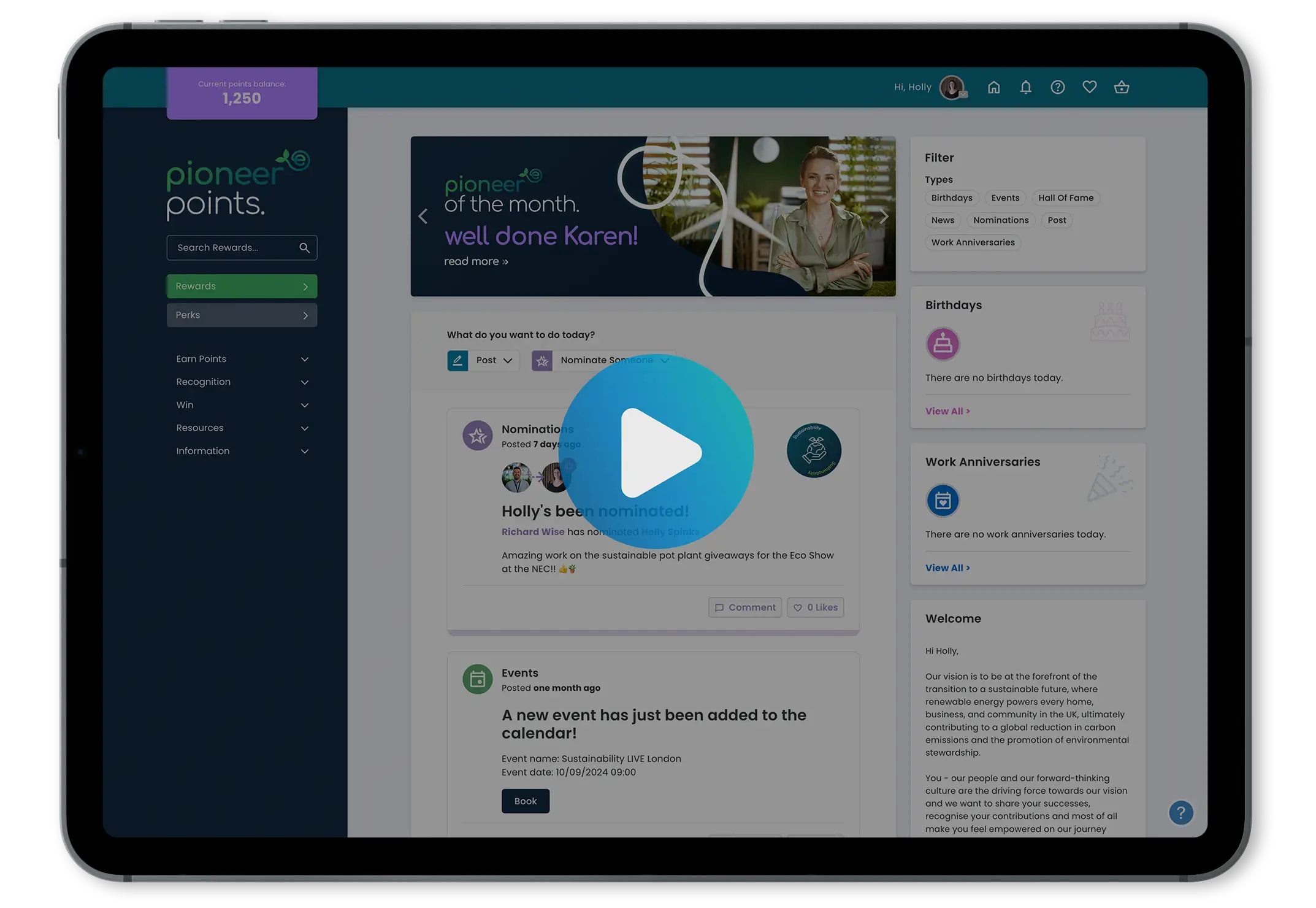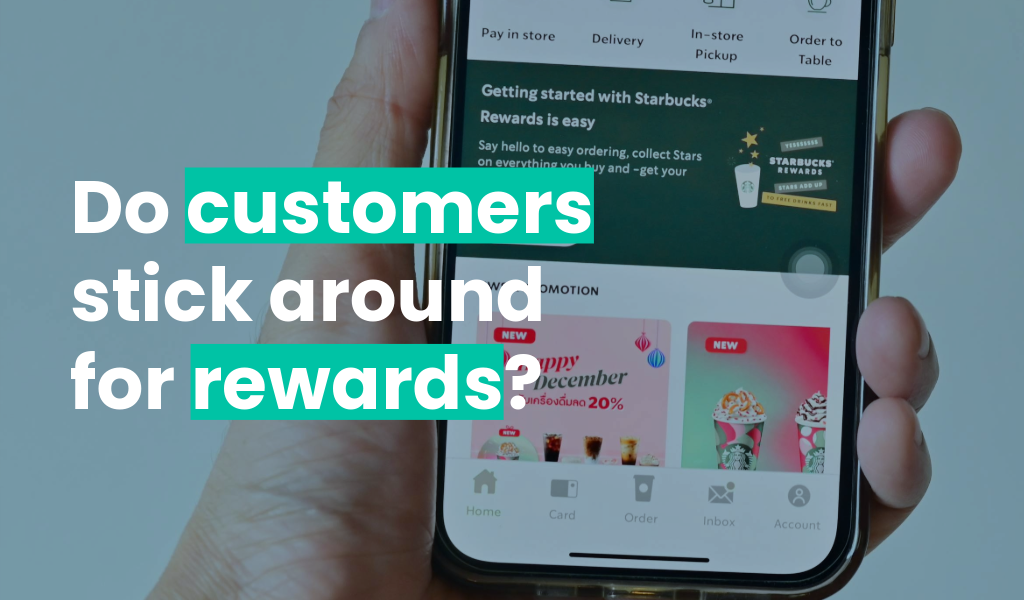


When customer attention spans are shorter than a queue at a salad bar, keeping hold of your audience is no small feat. Brands are constantly vying for a precious slice of loyalty — and when flashy ads and one-off deals stop cutting it, many turn to loyalty incentives to keep customers close (and spending).
These programmes, often packed with points, perks and the occasional shiny prize, aim to do more than just encourage repeat business. They’re designed to build lasting relationships, boost customer lifetime value, and turn casual buyers into loyal brand advocates. But here’s the big question — do they actually work? Or are loyalty incentives just a sugar rush that wears off faster than you can say “double points Tuesday”?
In this blog, we’ll unpack the psychology behind effective loyalty incentives, explore why some schemes flop while others flourish, and share how to create a programme that not only keeps your customers coming back, but gets them raving about you while they’re at it. Whether you’re designing your first incentive strategy or looking to breathe new life into an existing one, we’ve got some smart insights (and a few cautionary tales) coming your way.
Skip to:
What are loyalty incentives?
Loyalty incentives are the rewards, perks, and little “thank yous” that businesses offer to keep customers coming back for more. Think of them as a well-earned pat on the back for choosing your brand over the sea of competitors out there. Whether it’s points to redeem, exclusive offers, birthday surprises, or early access to sales, these incentives are part of a wider strategy to build lasting customer relationships and encourage repeat business.
But they’re not just random freebies. Loyalty incentives are a strategic tool — thoughtfully designed and carefully implemented as part of a bigger customer relationship management (CRM) picture. When done right, they’re less about gimmicks and more about building trust, brand love, and long-term engagement.
At their heart, loyalty incentives are a tangible way of saying, “We see you. We appreciate you. And we’re glad you’re here.” It’s about rewarding behaviour, yes — but it’s also about recognising loyalty as a two-way street. You give your customers great experiences and meaningful value, and in return, they give you their trust, attention, and repeat business.
More than just a marketing tactic, loyalty incentives tap into something deeper — they show your customers that they’re not just another order number. They’re part of your community. Your story. Your growth. And when people feel appreciated and included, they’re far more likely to stick around (and tell their friends while they’re at it).
So while the points and prizes might get the headlines, the real value of loyalty incentives lies in what they represent: a commitment to connection, consistency, and long-term loyalty.
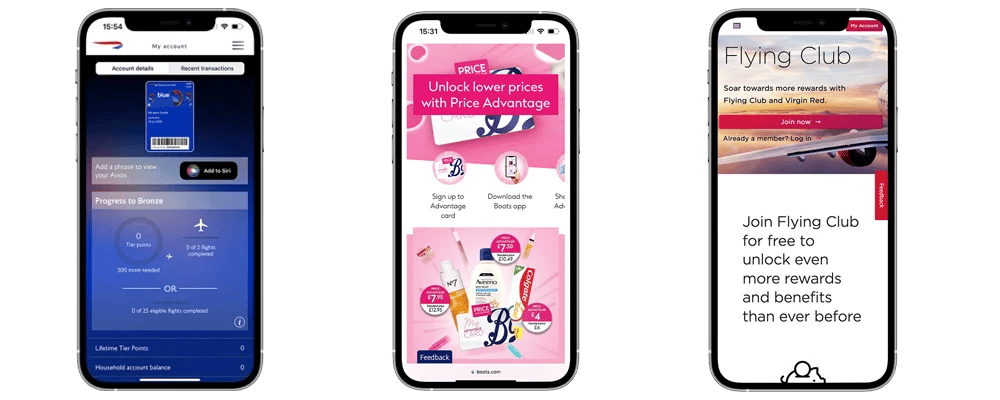
Do loyalty incentives actually work?
Absolutely, but there are several factors to be considered.
They’re not just about bribing people to make a second purchase; they’re about creating a sense of value, appreciation and mutual benefit. Customers are far more likely to stick with a brand that recognises and rewards them for their loyalty — especially when the experience feels personal, not perfunctory.
That said, not all incentives are created equal. Tossing out random discounts like confetti might get you a brief spike in sales, but it won’t build long-term loyalty. Effective loyalty tools go deeper. They tap into emotional triggers, create habits, and make customers feel like part of something bigger — your brand community. So yes, incentives can drive loyalty, but only when they’re baked into a thoughtful, customer-centric strategy (and not just tacked on like an afterthought).
For instance, a coffee shop might offer a free drink after several purchases, while airlines provide elite perks for frequent flyers.
Loyalty incentives are known as ‘extrinsic motivators’ and, when structured effectively, these incentives can provide a short-term boost in customer engagement and sales.
For instance, a well-executed points-based system can encourage customers to make repeat purchases to accumulate points and unlock rewards.
Furthermore, loyalty incentives have the potential to evolve into medium-term sales drivers if the programme is structured in a way that continues to inspire long-term engagement.
Tiered loyalty programmes, for example, offer escalating benefits as customers progress through different levels or tiers. By providing customers with increasingly attractive perks as they demonstrate greater loyalty, tiered programmes incentivise repeat purchases over time.
However, while extrinsic motivators can drive short to medium-term results, they are not sustainable in isolation.
To truly foster long-term loyalty and maximise the effectiveness of loyalty incentives, companies must also address ‘intrinsic motivators’. Similarly, many companies view these types of programmes as fleeting promotions rather than long-term strategies. While this approach may attract initial interest, true loyalty is all about fostering strong lasting customer relationships.
‘Intrinsic motivators’ on the other hand are the heart and soul of the customer experience – they’re all about those special touches that make customers feel truly valued. Things like providing amazing customer service and personalised interactions based on their preferences and habits.
Without these personal connections, loyalty programmes just don’t have the same impact. Exceptional customer service is like having a friend who always knows just what you need. It’s about listening, solving problems quickly and making every interaction memorable. When customers feel this kind of care, it sticks with them and makes them want to return again and again. And that’s where loyalty incentives come in— once they’re satisfied with the service they receive, they’re far more likely to engage with any rewards on offer.

The benefits of loyalty incentives
When loyalty incentives are done well — blended seamlessly with what really motivates your customers — the results can be nothing short of brilliant. We’re talking about a win-win situation where both businesses and customers walk away happy. It’s not just about chucking a discount into someone’s inbox and hoping for the best. It’s about creating a genuinely rewarding relationship that delivers long-term value on both sides.
For customers, a well-crafted incentive programme makes them feel recognised, valued and — dare we say — special. There’s something deeply satisfying about earning rewards simply for doing business with a brand you already like. It turns the customer experience into something a bit more engaging, a bit more personal, and a lot more sticky.
From the business side, the benefits go far beyond the warm fuzzies. Here’s what’s up for grabs:
Customer retention
Let’s face it — customer loyalty doesn’t just happen by accident. In today’s hyper-competitive market, your customers are constantly being courted by competitors promising bigger, better, shinier deals. If you want to keep them close, you’ve got to give them a compelling reason to stay — and loyalty incentives do just that.
Whether it’s points that add up to meaningful rewards, exclusive access to new products, early-bird discounts, or a cheeky birthday freebie, these small gestures create a strong sense of value and belonging. Customers aren’t just buying a product — they’re joining an experience, one that makes them feel noticed and appreciated.
And here’s the best bit: retention is a lot more cost-effective than acquisition. The numbers don’t lie — it costs significantly more to win over a brand-new customer than it does to keep an existing one happy. And yet, too many businesses pour their energy (and budget) into chasing new leads while forgetting to nurture the loyal fans they already have.
Loyalty incentives flip that script. By investing in the people who already like what you do, you reduce churn, increase repeat purchases, and build a customer base that’s not only reliable but also more profitable over time. Plus, long-term customers are more likely to try new offerings, give feedback, and forgive the occasional hiccup — because you’ve earned their trust.
Increased customer lifetime value
If loyalty incentives had a résumé, “boosting customer lifetime value” would be right at the top — in bold, underlined, maybe even with a gold star. And rightly so.
When you reward customers for sticking around, they tend to do just that — and the longer they stay, the more they spend. We’re not just talking about a few extra quid here and there. Loyal customers are statistically proven to spend more over time, buy more frequently, and explore a wider range of your products or services. In short, they become high-value customers — the kind you’d happily clone if you could.
Loyalty incentives help shift the focus from one-off sales to long-term relationships. Instead of constantly scrambling to attract new customers (and burning through your marketing budget in the process), you’re nurturing the people who already like what you offer. You’re creating an environment where they’re not just encouraged to come back — they actually want to.
And here’s the clever bit: the value doesn’t just come from the purchases themselves. Loyal customers are more likely to try new product lines, respond to upsell opportunities, and stick with you even when the competition comes knocking. Over time, their value compounds — like interest, but far more rewarding.
So while loyalty incentives might start with a freebie or a discount, the real return is in the relationship. Every reward, recognition, or thoughtful nudge nudges your customer a little further along that journey — from first-time buyer to lifelong fan. And that, in terms of business value, is absolutely priceless.
Enhanced customer satisfaction
We all like to feel a bit special. Whether it’s a free coffee after your tenth visit or an unexpected “thank you” voucher in your inbox, those little extras can turn a standard transaction into a feel-good moment. And when customers feel good about your brand, they’re far more likely to stick around.
Loyalty incentives do more than just reward spending — they show that you’re paying attention. You’re not just interested in the sale; you’re interested in the person behind it. That kind of recognition goes a long way in today’s customer experience game. When a business takes the time to understand what its customers value — and then delivers on it — satisfaction skyrockets.
The result? Customers feel seen, heard, and appreciated. They’re not just another order number or data point in your CRM. They’re part of your brand story — and that connection builds trust, boosts engagement, and leaves them with a warm fuzzy feeling (the good kind, not the “is this jumper itchy?” kind).
Better still, happy customers are more forgiving. If things go a bit pear-shaped (it happens), customers who already feel well looked after are more likely to give you the benefit of the doubt. They’re also more likely to engage with feedback requests, try new products, and interact with your brand in more meaningful ways.
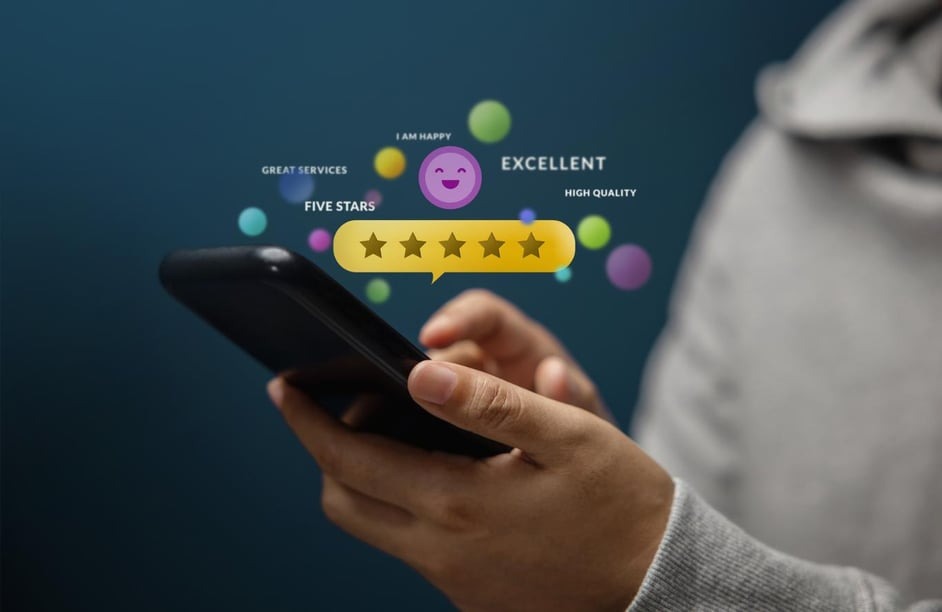
Brand advocacy
There’s nothing quite like a happy customer shouting about your business without you even asking. That’s the magic of brand advocacy — and loyalty incentives can be a powerful way to spark it.
When customers feel genuinely appreciated and rewarded, they don’t just come back — they start bringing other people with them. Whether it’s a casual chat over coffee, a glowing online review, or a humblebrag post on LinkedIn (“Just received a surprise thank-you from my favourite supplier — top class service again!”), they become your unofficial marketing team.
These advocates aren’t just promoting your products — they’re vouching for your brand, your service, and your values. And let’s be honest, word of mouth still packs more punch than a polished ad campaign. People trust people, and a genuine recommendation from a friend or peer carries serious weight.
A smart loyalty programme turns satisfied customers into raving fans by giving them something to talk about. It could be exclusive perks, insider access, or even just thoughtful gestures that make them feel seen. The key is creating moments worth sharing — little surprises that spark delight and inspire stories.And here’s the best part: brand advocacy is the gift that keeps on giving. The more your advocates talk, the more new customers they attract — many of whom will go on to become loyal fans themselves. Before you know it, you’ve built a community that does your marketing for you. All because you took the time to say, “Thanks for sticking with us.”
That’s not just customer retention — that’s customer-powered growth. And it’s absolute marketing gold.
Competitive advantage
In crowded markets where products and prices can start to feel a bit samey, loyalty incentives can be your not-so-secret weapon — the thing that makes customers pause, smile, and say, “Actually, I’ll stick with them.”
A compelling loyalty programme doesn’t just reward purchases — it adds a layer of value that competitors can’t easily replicate. It gives your customers a reason to choose you, even when someone else is shouting “20% off!” from the rooftops. Because let’s face it — most people would rather build a relationship with a brand that values them than chase short-term bargains from one brand to the next.
When you consistently show customers that their loyalty is noticed and appreciated — not just through points or perks, but through thoughtful, meaningful experiences — you carve out a space in their mind (and wallet) that’s hard to budge. Loyalty becomes less about habit, and more about preference.
This is where competitive advantage really kicks in. You’re no longer competing purely on price, features, or convenience. You’re building emotional loyalty — the kind that keeps customers coming back even when alternatives exist. You’re turning your brand into the obvious choice, not just the available one.
And while your competitors are busy trying to undercut each other, you’re quietly building a community of loyal customers who wouldn’t dream of going anywhere else. Now that’s an edge worth having.
Data insights and customer engagement
These programmes offer businesses a wealth of valuable data and insights into customer behaviour and purchasing patterns. Through careful analysis of this data, businesses gain a deeper understanding of their customers, enabling them to tailor marketing strategies and their value proposition to more effectively engage with their audience.
Opportunities for upselling and cross-selling
In most cases, incentives act as powerful tools for businesses to boost revenue by strategically upselling and cross-selling to their loyal customers. They provide a platform to communicate tailored promotions and offers for product add-ons that would be well-suited to individual customers. By analysing customer data, businesses can continuously improve the effectiveness of their incentives. It allows marketers to segment campaign audiences based on prior interactions and insight into their preferences. Thus, resulting in a win-win scenario for both businesses and customers.
Cost savings on marketing
Bringing in new customers often means splashing out on advertising, promotions and all sorts of outreach efforts. However, holding onto the customers you already have by offering them loyalty incentives is a much more cost-effective strategy. When businesses make customer retention a priority, they’re actually cutting down on “customer churn” – when customers start looking elsewhere. Instead of continually hunting for new customers, businesses can focus on nurturing the relationships they’ve already built.
The different types of loyalty incentives
Loyalty incentives aren’t one-size-fits-all — and that’s the beauty of them. There are loads of creative ways to reward your customers, depending on who they are, what motivates them, and how you want to shape their journey with your brand. From classic points schemes to VIP experiences and cashback perks, there’s plenty of room to get clever with your strategy.
The best programmes blend structure with flexibility — giving customers clear reasons to stay engaged, while keeping the rewards exciting and genuinely worthwhile. Whether you’re looking to drive repeat purchases, boost engagement, or simply say “thanks” in a more meaningful way, there’s an incentive type to match.
Here are a few of the most popular and effective types of loyalty incentives you might want to explore:
 Points-based incentives
Points-based incentives
A points-based loyalty incentive operates on a straightforward premise: the more you spend, the more points you earn. With each purchase, customers accrue points that can be redeemed for a variety of enticing rewards, ranging from discounts on future purchases to complimentary products or services. This simplicity is what makes this programme type so appealing.
For customers, it provides a tangible sense of progress and reward for their loyalty. Every purchase brings them closer to unlocking valuable benefits, creating a sense of achievement with each transaction. Secondly, this system serves as a powerful incentive for repeat purchases. Knowing that each transaction contributes to their point balance, customers are motivated to return to the same business to continue accumulating points. As customers strive to reach higher reward tiers, they are inclined to spend more frequently or make larger purchases, further solidifying their relationship with the business.
 Tiered loyalty incentives
Tiered loyalty incentives
Unlike traditional loyalty initiatives, where rewards are uniform for all participants, tiers offer escalating benefits as customers progress through different levels. At the entry level, customers may enjoy basic benefits such as occasional discounts or special promotions. However, as they demonstrate increased loyalty by making more purchases or engaging with the brand in other meaningful ways, they unlock access to higher tiers with more enticing perks.
These perks could include exclusive access to events such as product launches or VIP sales, where customers can be the first to preview new offerings or enjoy limited-edition products. Personalised services, such as priority customer support or concierge services may also be offered at higher tiers.
The prospect of unlocking increasingly attractive benefits serves as a powerful incentive for repeat purchases and deeper engagement with the brand. Tiers also foster a sense of exclusivity and status among customers. As they ascend to higher tiers, they feel a sense of achievement and recognition for their loyalty, reinforcing and strengthening their brand affinity.
 Cashback rewards
Cashback rewards
Unlike longer-term loyalty rewards that may require accumulating points, cashback provides an alternative return on spending that is linked to an individual purchase. This makes it attractive to customers whose mindset may not (yet) be on repeat purchases. Making it great for short-term promotions and new customer offers. The concept is straightforward: customers receive a percentage of their purchase amount back as a rebate, effectively reducing the overall cost of their transaction.
Unlike other types of rewards that may be limited to specific products or services, cashback can be used however the customer sees fit. But beware, as cash is easily lost among day-to-day household expenses, and so too is its inherent reward value. So it does lack that special brand warmth embodied through other scheme types.
 Discounts
Discounts
Discount-based incentives provide customers with immediate savings on their purchases, either through percentage-based discounts or fixed amounts off the total purchase price.
The allure of immediate savings is particularly effective in driving impulse purchases and converting potential customers into paying ones. Discounts can be strategically applied to specific products or categories to shift inventory.
For new customers, the promise of savings incentivises them to make their first purchase and try out the brand’s products or services. Once they experience the value offered by the business, they may return for future purchases, thus laying the foundation for long-term customer loyalty. For existing customers, discounts and coupons serve as a way to reward their loyalty and encourage repeat purchases.
A word of warning though. Discounts come with many pitfalls for business profitability and over-reliance on cutting prices can send your profit margins into a negative spiral – so use them sparingly!
 Special events and experiences
Special events and experiences
VIP gatherings and product launch parties are prime examples of special events that cater to loyal customers. By inviting them to exclusive events where they can interact with company representatives, mingle with like-minded individuals and get a firsthand look at upcoming products or services, businesses make customers feel privileged and special. These events provide a unique opportunity for customers to connect with the brand on a personal level, deepening their emotional attachment.
If possible, you could even grant your most loyal customers access to areas typically off-limits to the public, such as production facilities or creative studios, to gain an insider’s view of their operations. This behind-the-scenes experience not only educates and entertains, but also fosters a sense of trust. Customers can gain an understanding into how their favourite products are made or how their services are delivered, further strengthening their bond with the brand.

How to reward customers using loyalty incentives
 Get to know your customers on a deeper level
Get to know your customers on a deeper level
Understanding your customers is the foundation of any successful loyalty incentive. It involves delving deep into various aspects of their behaviour, preferences and demographics to gain insights that will inform your strategy:
Demographics analysis
Begin by segmenting your customer base based on demographic factors such as age, gender, location, income level and occupation. Understanding the demographic makeup of your audience provides valuable context for tailoring your loyalty incentives to different customer segments.
For example, younger customers may be more responsive to digital rewards, while older customers may prefer traditional incentives like discounts or coupons.
Purchasing patterns
Look at factors such as frequency of purchases, average order value, preferred product categories and seasonal buying patterns. By understanding what products or services your customers are most interested in and how they prefer to shop, you can tailor your loyalty incentives to align with their purchasing habits.
Feedback analysis
Solicit feedback from your customers through surveys, reviews and direct communication channels to gain insights into their satisfaction levels, pain points and preferences. Pay attention to both qualitative feedback, such as comments and suggestions, and quantitative feedback, such as Net Promoter Score (NPS) or Customer Satisfaction (CSAT) ratings. This can help you identify areas for improvement and uncover opportunities to enhance your loyalty incentives based on real-life customer needs.
 Communicate clearly
Communicate clearly
Effective communication is vital. Customers must have a comprehensive understanding of how they can earn rewards, what rewards they can expect and how they can redeem them.
Crafting concise and straightforward messaging is crucial to ensure that customers can easily grasp the mechanics of how the programme works, without any confusion. So consistency in messaging – across all communication channels – is paramount. Whether customers encounter information about the programme via email, social media or in-store POS signage, the messaging should be cohesive. This consistency ensures that every customer receives a unified and seamless experience, regardless of how they engage with the brand.
 Make it super-easy to participate
Make it super-easy to participate
When customers decide to get involved, you want to make it as easy as possible for them to sign up. This means minimising the steps required and asking for only essential information during the registration process, to make it quick and hassle-free.
Be sure to provide customers with intuitive tools to track their progress. This could include a user-friendly dashboard or mobile app where customers can easily view their points balance, transaction history and any rewards they’ve earned. And not forgetting, clear instructions on how to redeem rewards, whether it’s through a mobile app or in-store.
 Personalised rewards
Personalised rewards
Once businesses have a clear understanding of their customer’s preferences, they can tailor rewards and incentives to the individual. This might involve offering discounts or promotions on products or services that align with a customer’s previous purchases or browsing history.
For example, if a customer frequently purchases skincare products, they might receive a personalised offer for a discount on their favourite brand or a complimentary sample of a new product.
Ready to build loyalty that actually lasts?
At Incentivesmart, we don’t just do points and prizes — we help you build real, lasting connections with the people who matter most to your business. Whether you’re starting from scratch or giving your current loyalty strategy a much-needed refresh, our team knows exactly what it takes to turn your customers into loyal advocates.
We design clever, custom B2B loyalty programmes that not only reward behaviour, but genuinely engage your audience — helping you boost retention, drive repeat purchases, and stand out from the competition. And with our powerful platform and hands-on support, you won’t be left guessing at any point along the way.
So, if you’re ready to turn loyalty into your competitive edge — let’s make it happen.
Get in touch, and let’s build something brilliant together.
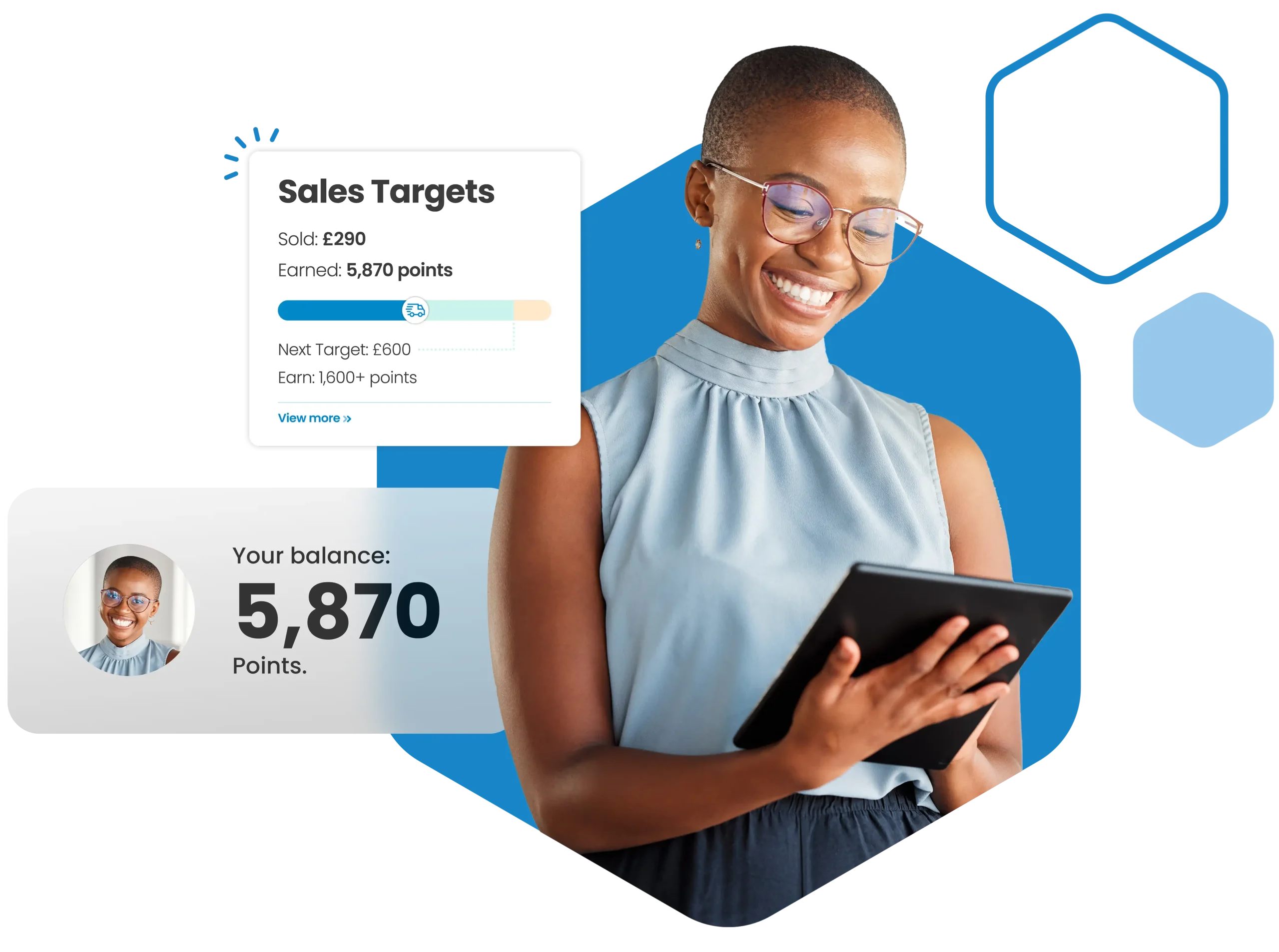

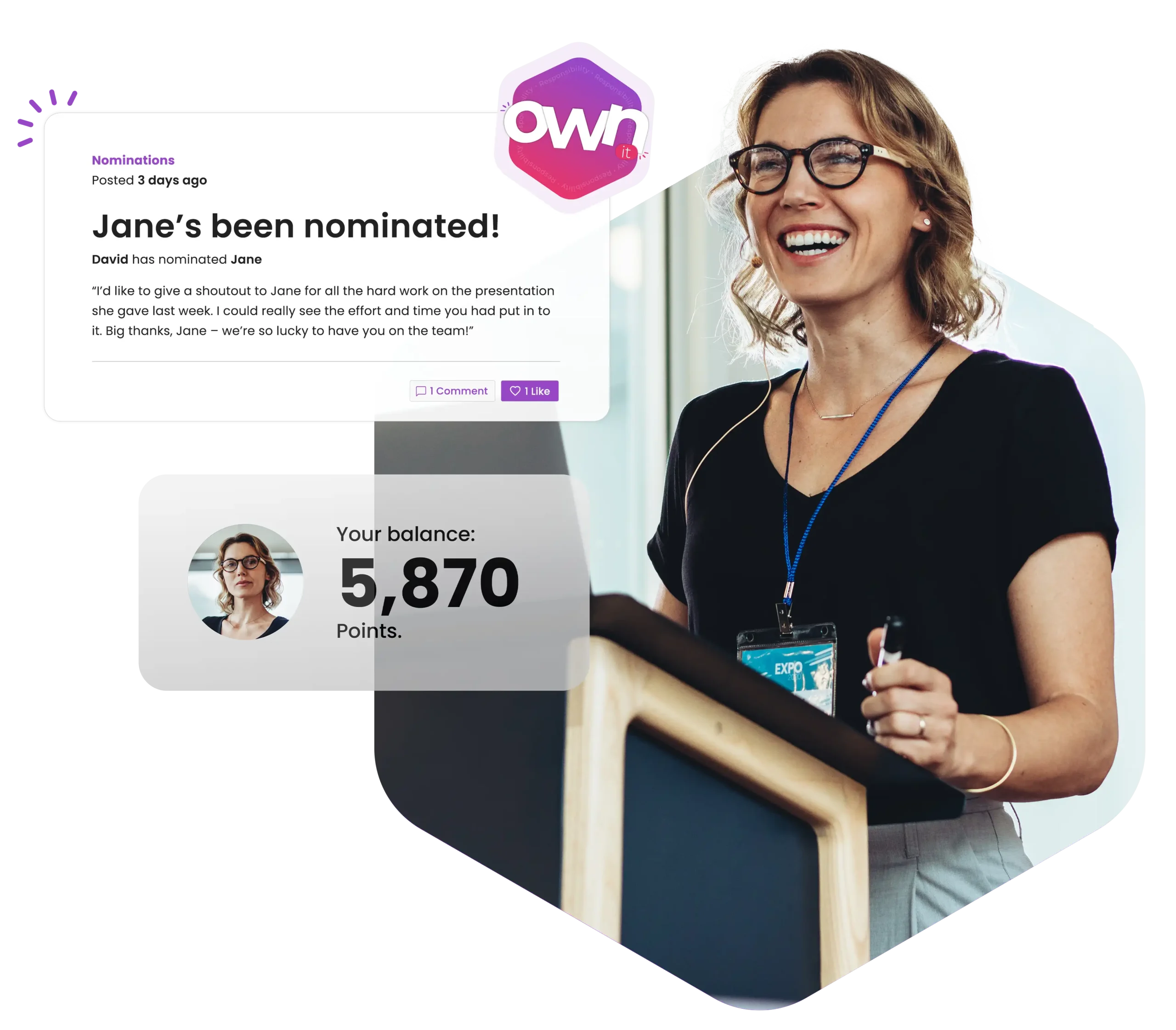
![How to keep customers coming back for more{{ include_custom_fonts({"Poppins":["Semi Bold"]}) }}](https://no-cache.hubspot.com/cta/default/5921162/interactive-188375258646.png)

